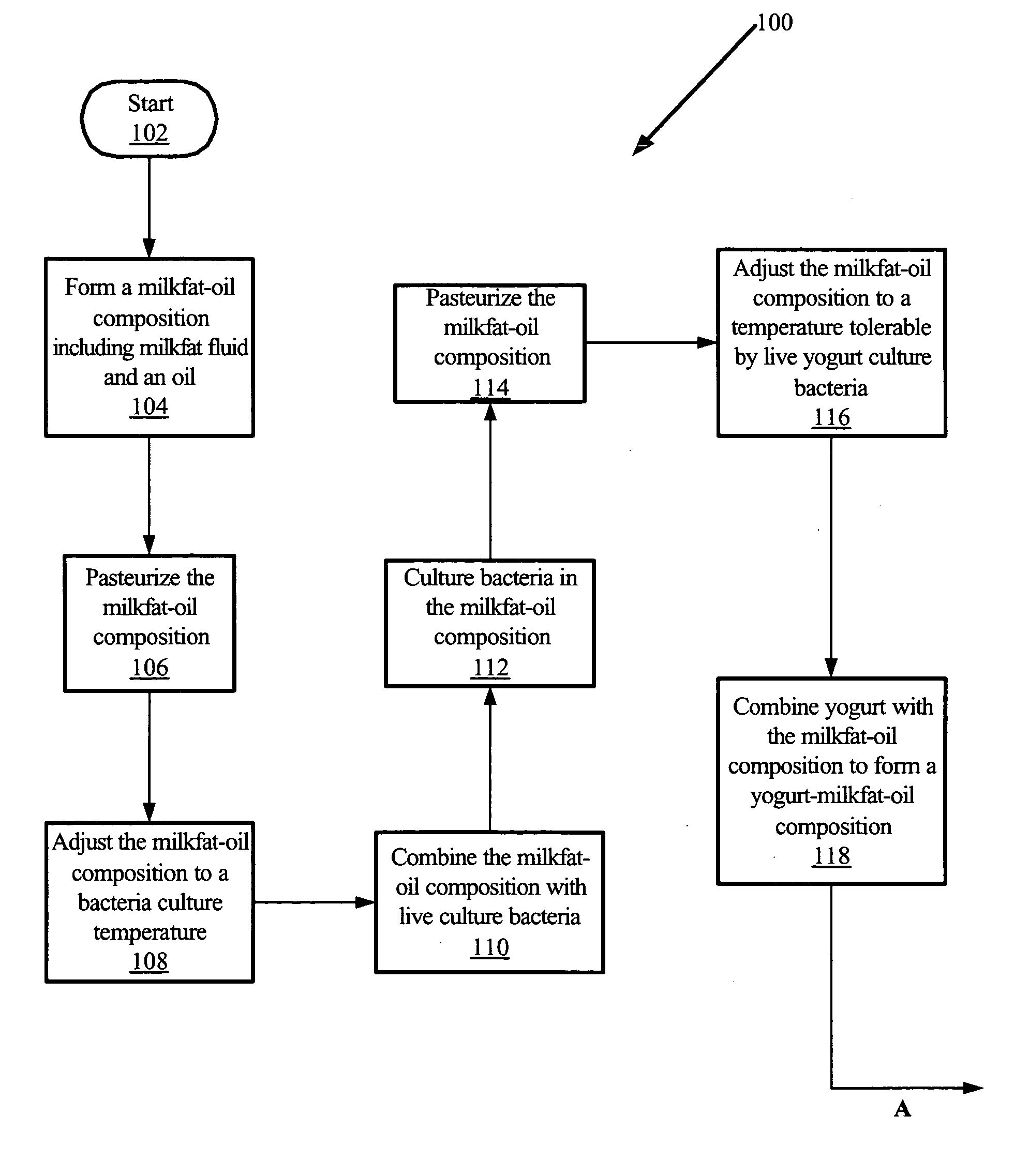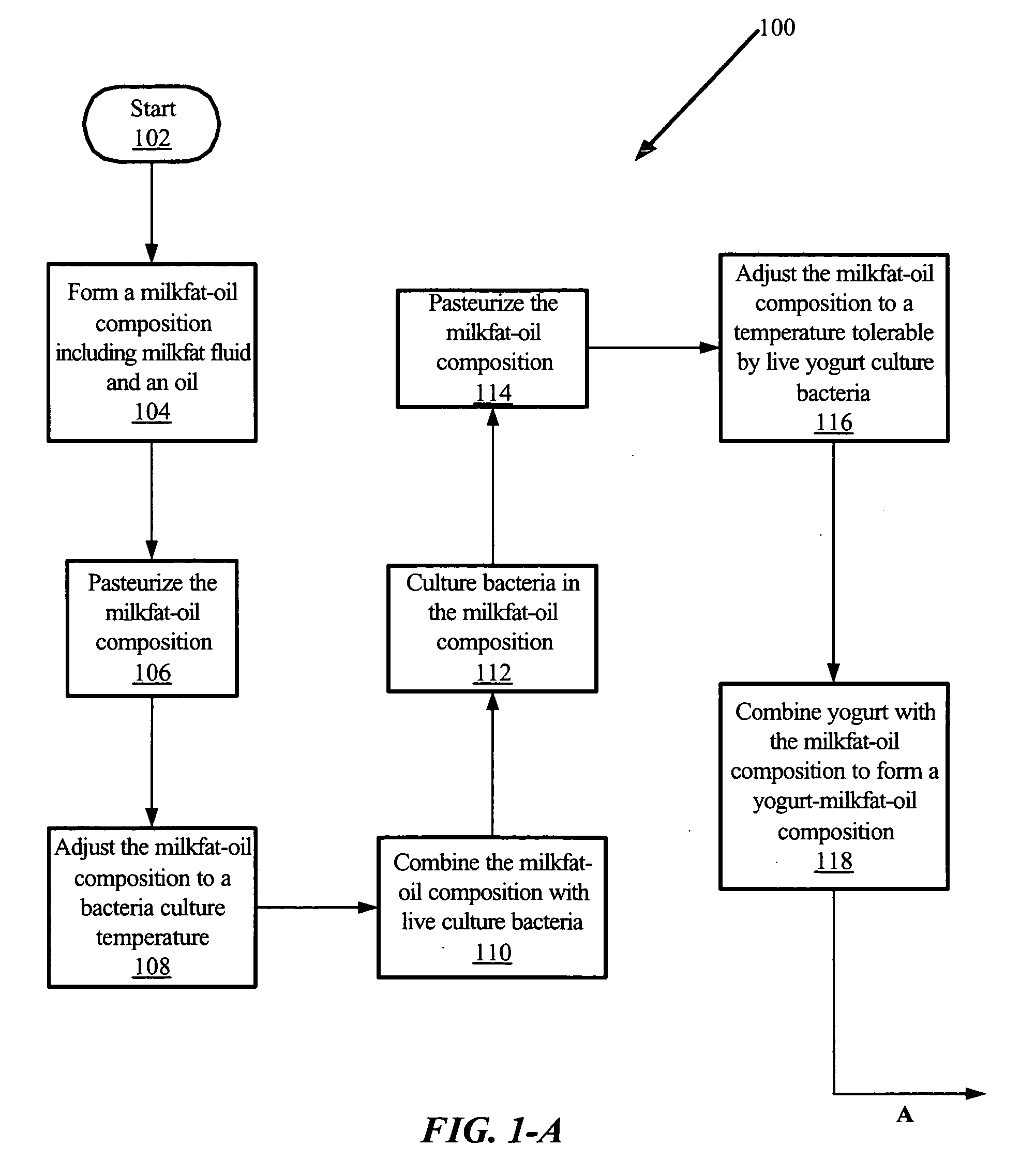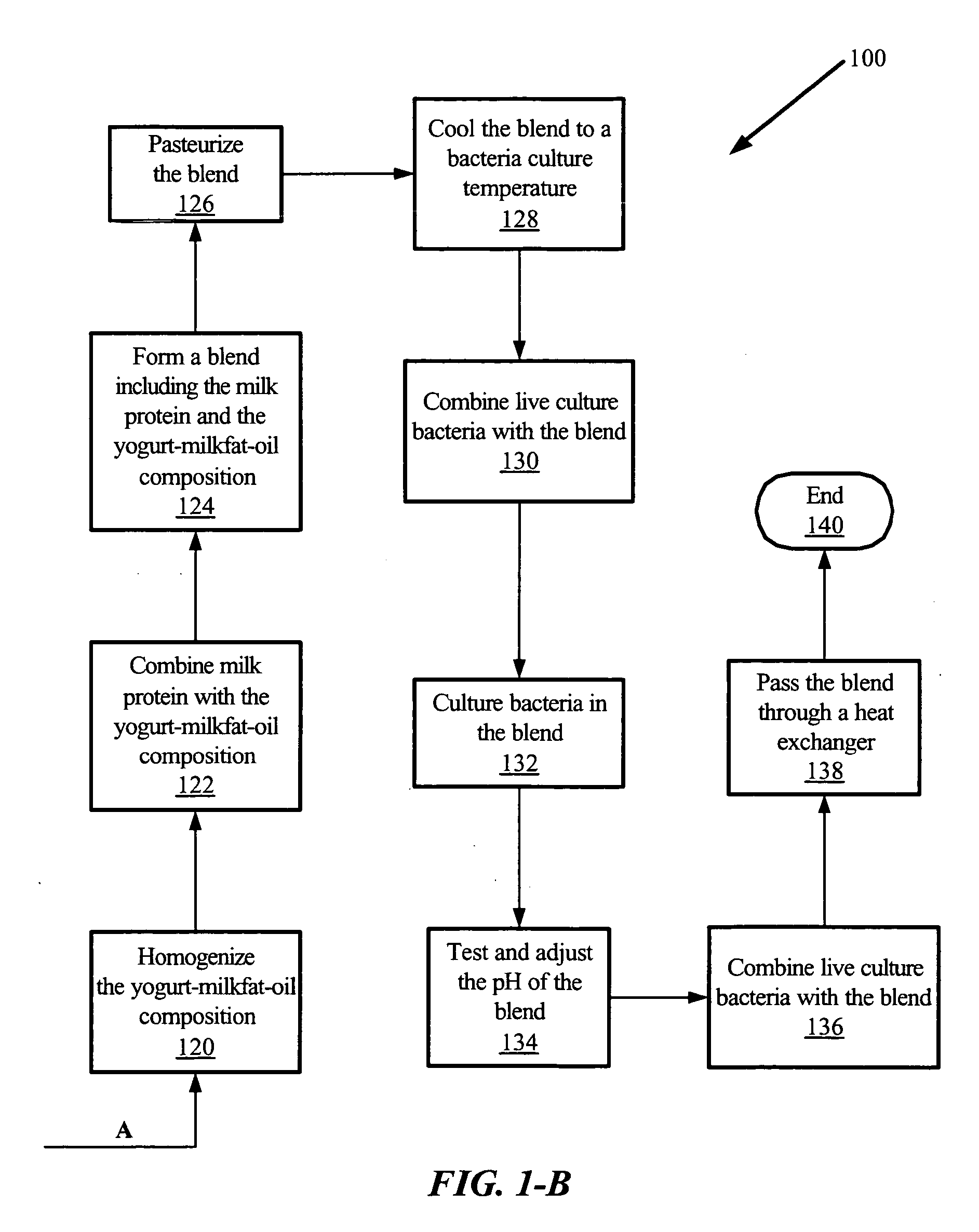Yogurt-cheese compositions
a technology of yogurt and composition, applied in the field of yogurt products, can solve the problems of affecting the taste of yogurt, and affecting the taste of yogur
- Summary
- Abstract
- Description
- Claims
- Application Information
AI Technical Summary
Benefits of technology
Problems solved by technology
Method used
Image
Examples
example 1
[0117] A batch of 1,500 pounds of pre-pasteurized heavy cream having a butterfat content of 44% by weight is pumped into a kettle equipped with a heater and an agitator. Vegetable oil in an amount of 600 pounds is added to the heavy cream. After 15 minutes of agitation, 21.6 pounds of K6B493 stabilizer, 279.6 pounds of nonfat dry milk and 599 pounds of water are added to the cream with agitation to thicken the mixture. In addition, 294 pounds of a milk protein-whey protein composition are added to the mixture. The composition includes 57% by weight of Simplesse®100 microparticulated whey protein concentrate having about 53.2% plus or minus 2% by weight of protein, commercially available from CP Kelco; and 43% by weight of a skim milk protein concentrate having about 42% by weight of protein. Sodium chloride in an amount of 24.6 pounds is added to the heavy cream. The cream is then pasteurized by heating it with agitation to 165° F. and holding at that temperature for 15 minutes. The...
example 2
[0121] A batch of 1,335 pounds of pre-pasteurized heavy cream having a butterfat content of 44% by weight is pumped into a kettle equipped with a heater and an agitator. Vegetable oil in an amount of 536 pounds is added to the heavy cream. Sodium chloride in an amount of 21.93 pounds is added to the heavy cream. After 15 minutes of agitation, 19.26 pounds of K6B493 stabilizer, 249 pounds of nonfat dry milk and 534 pounds of water are added to the cream with agitation to thicken the mixture. In addition, 262 pounds of a milk protein-whey protein composition are added to the mixture. The composition includes 57% by weight of Simplesse®100 microparticulated whey protein concentrate having about 54% by weight of protein, commercially available from CP Kelco; and 43% by weight of a skim milk protein concentrate having about 42% by weight of protein. The cream is then pasteurized by heating it with agitation to 165° F. and holding at that temperature for 15 minutes. The cream is then cool...
PUM
 Login to View More
Login to View More Abstract
Description
Claims
Application Information
 Login to View More
Login to View More - R&D
- Intellectual Property
- Life Sciences
- Materials
- Tech Scout
- Unparalleled Data Quality
- Higher Quality Content
- 60% Fewer Hallucinations
Browse by: Latest US Patents, China's latest patents, Technical Efficacy Thesaurus, Application Domain, Technology Topic, Popular Technical Reports.
© 2025 PatSnap. All rights reserved.Legal|Privacy policy|Modern Slavery Act Transparency Statement|Sitemap|About US| Contact US: help@patsnap.com



